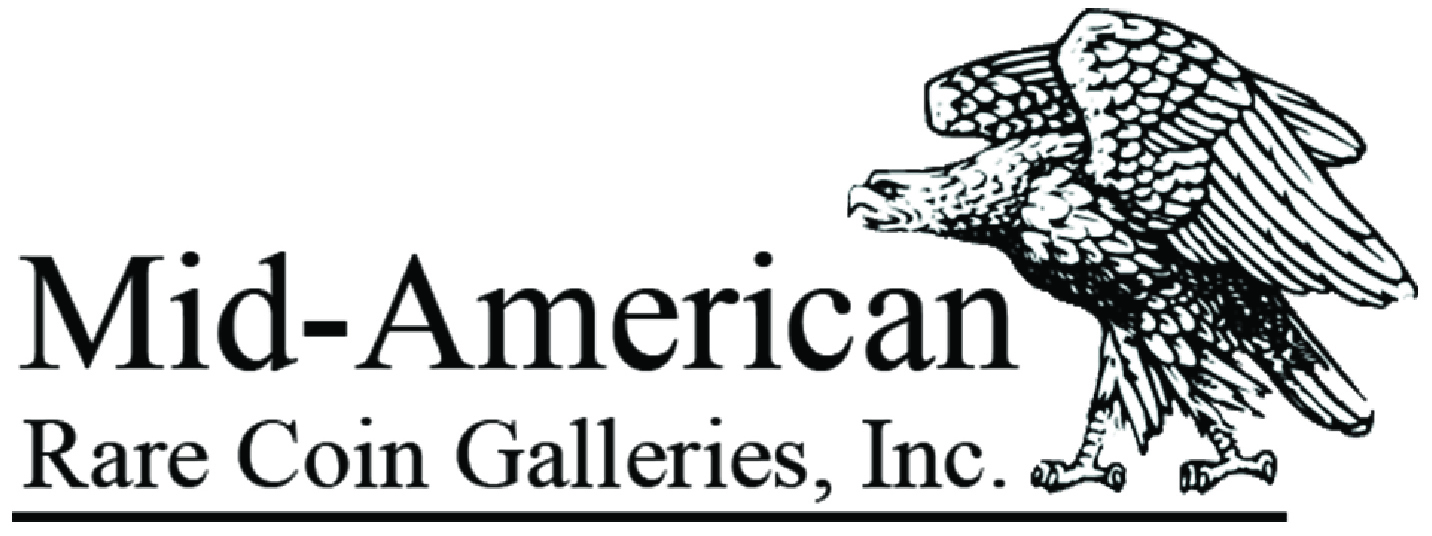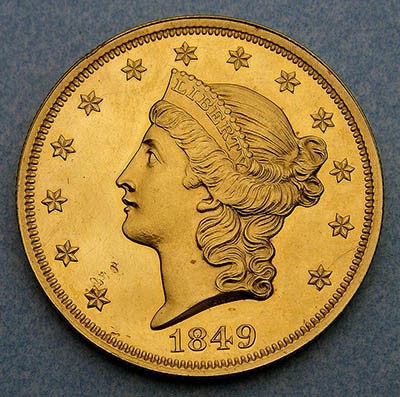Spring is fast approaching and for many that means a trip to our nation’s capital to see the cherry blossoms and to visit the many free Smithsonian Museums. There will also be millions of young people taking the traditional eighth grade class field trip to Washington, D.C. Hopefully, a large number of those students will have a chance to see the National Numismatic Collection at the Smithsonian National Museum of American History.
The new exhibit on display, called “The Value of Money,” is a great introduction to the excitement and allure of coin collecting. What eighth grader, or anyone for that matter, would not be awestruck to see a $100,000 bill?
I have been involved with the Smithsonian National Numismatic Collection (NNC) for many years, beginning about 15 years ago when I was doing research for my book, 100 Greatest U.S. Coins, many of which can only be found in the Smithsonian collection. The curators at the time, Dick Doty and Karen Lee, were kind, generous and provided ready access to the greatest coin collection in the world. My relationship with the NNC deepened during the several years that it took to complete my book Encyclopedia of United States Gold Coins 1795‐1933, which is based on the collection.
 |
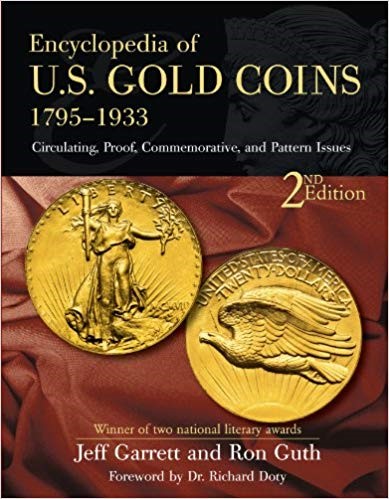 |
During that time, it was decided by museum leadership to take down the giant coin exhibit that had been on display there for almost 40 years. The space was needed for a remodel of the museum to accommodate the Star Spangled Banner. There were no plans to replace the exhibit that had wowed visitors for decades with the spectacular collection of gold coins assembled by Josiah Lilly. The numismatic community was in universal shock.
I was part of the team of volunteers that helped to remove the collection from the exhibit cases for relocation to the rows of steel cabinets in the numismatic vaults of the NNC. This was a solemn task, but obviously an exciting one for true coin nerds like myself.
Bringing coins back on display
After the coins had been secured back into the vaults for a few months, I was told that if the numismatic community could raise about $250,000, a small part of the collection could be part of a three- to five-year exhibit in the Smithsonian Castle. Working with the NNC staff and their amazing development office, I took on the task of securing donations for the project. NGC was one of the first places I called, and they immediately agreed to help out. It took some time, but we were successful in getting coins back on display in a Smithsonian venue. The grand opening of the event was a sigh of relief for the numismatic community.
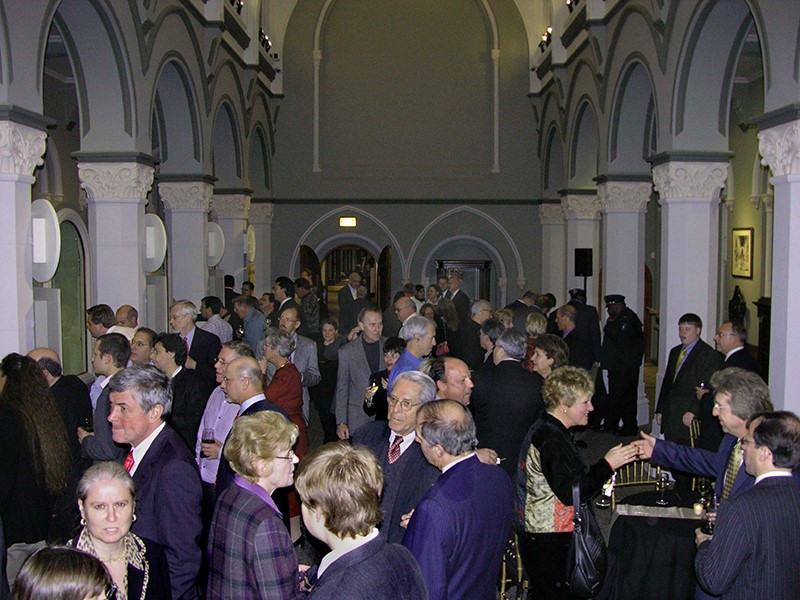 |
|
| The grand opening of the numismatic exhibit in the Smithosonian Castle. | |
A few years later, a small but somewhat larger space became available in a prime spot at the Smithsonian National Museum of American History. Again, the condition was that we would need to raise significant funds to mount the exhibit. NGC and several others stepped up to the plate to fund the “Stories on Money” exhibit. Most in the numismatic community were thrilled to have rare coins once again on display in our national museum. The exhibit was successful, and millions visited it over the next several years.
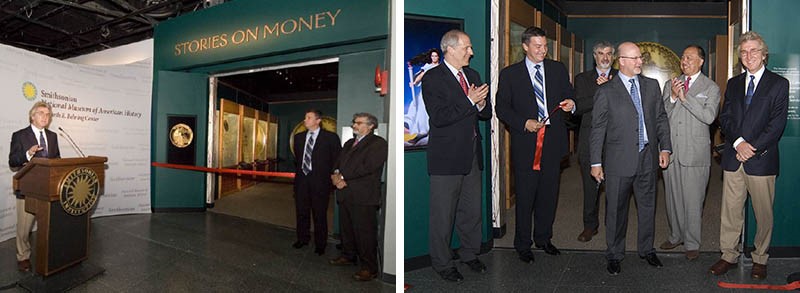 |
|
| Me, speaking at “The Stories on Money” exhibit, and the ribbon cutting. | |
In recent years, the Smithsonian National Museum of American History has been renovating its west wing, and a much larger space (over 1,000 square feet.) became available for a numismatic exhibit if the funds could be raised. This time the price tag was about $2 million dollars, but the exhibit would guarantee a permanent place for numismatics in the museum (at least in my lifetime).
The task was daunting, but in the end the funds were secured thanks to several “key” donations made by NGC, Lee Minshull, Bill Gale, Charles and Joel Anderson and many others. I will always be thankful for those who made “The Value of Money” exhibit possible.
Visit the exhibit
The point of this article is to encourage you to visit this new exhibit if you are in Washington, D.C. It is quite simply spectacular! The entrance to the exhibit features an actual bank vault door enticing visitors to see what lies within. The exhibit display is akin to individual jewel boxes with focused, state-of-the-art lighting. Visitors are first greeted with a case featuring the famous 1913 Liberty Nickel, 1907 Ultra High Relief, 1974 Aluminum Cent and the $100,000 bill.
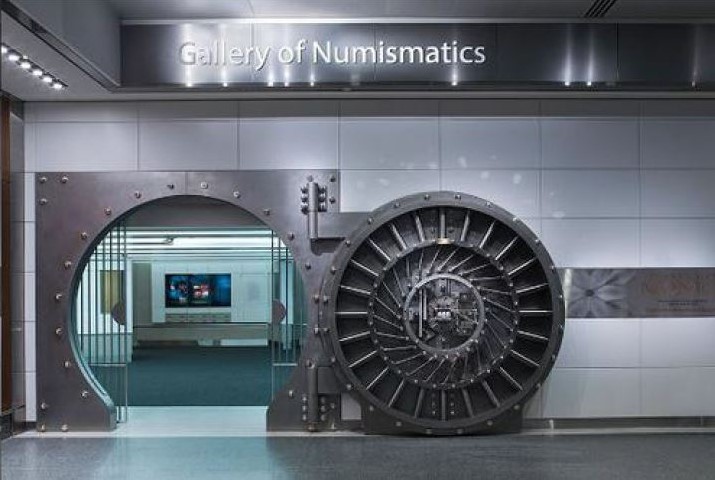 |
|
| The entrance to “The Value of Money” exhibit. | |
The exhibit is organized by theme, and most visitors tour the gallery by going around counter‐clockwise. The first cases are about “The Origins of Money” and discuss the various forms of money used around the world over the centuries. Featured in the cases are examples of seashell money, stone Yap money, gold and silver ingots, iron money and much more.
Next, the exhibit explores “The Innovations of Money.” Objects in this exhibit include the first credit cards, square readers and bank notes from around the world.
Later in the exhibit are cases exploring “The Messages of Money.” The coins and currency in these cases show how governments have used currency for political messages over the centuries.
“The Artistry of Money” cases show examples of ancient Greek coins and their influence on modern coinage. There are also several interesting objects, such as paper money origami, on display, along with many other beautiful examples of paper money.
My personal favorites are the cases presenting “The Allure of Money.” This part of the exhibit explores the hobby of numismatics, including many great collectors of the past. These cases are where you will see the many legendary rarities that are housed in the national collection. A partial list includes the following coins:
- 1849 Double Eagle
- 1922 Half Eagle
- 1787 Brasher Doubloon
- (3) 1804 Silver Dollars
- (2) 1877 Gold Half Unions
- 1933 Double Eagle
- 1906 Barber Double Eagle
- 1907 Ultra High Relief (diameter of a $10)
- 1907 Ultra High Relief
- The finest collection of Russian coins outside of The Hermitage
It is worth a trip to Washington, D.C. just to see “The Allure of Money” showcases!
Recruiting new collectors with “Big Money”
I am very proud of “The Value of Money” exhibit, and it is great tool for recruiting new collectors. Over four million people visit the Smithsonian’s National Museum of American History each year, a majority of those being young people. With this in mind, the Museum of American History will debut a new numismatic exhibit targeted for young people in the fall.
The title of the new exhibit is “Big Money” and will be tailored to grade school age children, ages pre‐K to fifth grade. The exhibit will display interesting objects such as Yap money and large denomination currency that will hopefully excite and encourage young people to explore the world numismatics.
To everyone reading, plan a trip to the National Museum of American History soon, and spread the word about this amazing ambassador for the hobby.
More about the exhibit can be found on the Smithsonian website and in a great book by the Smithsonian curator, Dr. Ellen R. Feingold.
